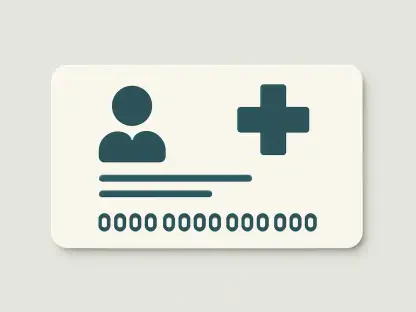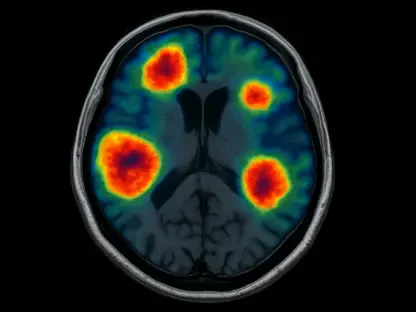In a recent dialogue with Ivan Kairatov, a seasoned expert in biopharma technology and innovation, we explore the recent National Health Insurance Authority (NHIA) initiative to enforce timely health service authorizations in Nigeria’s capital. With a focus on health policy development and operational challenges, Kairatov offers insights into the mechanisms and expectations surrounding the compliance checks currently underway.
What prompted the NHIA to initiate compliance inspections for HMOs in the Federal Capital Territory?
The NHIA’s decision to conduct compliance checks was primarily driven by the need to ensure timely access to healthcare services, which had been hampered by delays in authorizations. By implementing on-the-spot inspections, the NHIA aims to hold Health Maintenance Organizations (HMOs) accountable and enforce its new policy, thereby eliminating unnecessary waiting times for patients.
Can you elaborate on the new policy requiring HMOs to issue pre-authorisation codes within one hour?
This policy was introduced to streamline the authorization process, ensuring that healthcare providers can quickly receive approval to treat patients. The one-hour timeframe was strategically chosen to balance the need for swift decision-making while allowing HMOs enough time to validate claims. This change necessitates operational adjustments, including adopting more efficient communication systems and perhaps employing additional cloud-based or automated solutions to meet the deadline consistently.
During the recent visits to hospitals, what levels of compliance did the NHIA team observe?
The inspections revealed varied compliance levels across different hospitals. At the National Hospital, a 70 percent compliance rate was recorded, suggesting progress but also highlighting room for improvement. Staff at certain facilities were not fully familiar with the new policy, which hindered complete compliance. This underscores the critical need for ongoing education and practice refinement.
At the National Hospital, there was a 70 percent compliance rate reported. What are some challenges faced by personnel in following the new policy?
A significant challenge is that not all personnel were fully trained or informed about the policy requirements. This lack of awareness can lead to delays in processing requests. Additionally, adapting to a new system within a short timeframe can be logistically demanding, requiring changes in workflow and possibly triggering resistance to adopting new practices.
How does the NHIA plan to address issues where hospital personnel are not fully acquainted with the policy?
To tackle these problems, the NHIA has implemented immediate on-site sensitization sessions. Moreover, there are plans to develop more structured training programs, ensuring that all healthcare staff are well-prepared to comply with the new procedures. Furthermore, the NHIA aims to offer continuous support and monitoring to assist facilities in adapting seamlessly.
What immediate actions were taken when HMOs were found to delay authorisation during the inspections?
When delays were detected, the NHIA took prompt action by directly contacting the HMOs involved to address the issues. This hands-on approach facilitated rapid resolutions and demonstrated the NHIA’s commitment to holding organizations accountable for their performance.
What potential sanctions or penalties will NHIA impose on HMOs or healthcare facilities that fail to comply with the directive?
The NHIA is poised to impose stringent sanctions on any HMOs or healthcare facilities failing to meet the compliance standards. These measures could include financial penalties, suspension of operational licenses, or even more severe repercussions, depending on the extent and frequency of non-compliance.
Can you discuss the improvements reported at the National Hospital regarding waiting times and service delivery for patients?
Improvements have been noted through strategically reorganizing the patient flow and enhancing staff efficiency. The adoption of best practices aimed at reducing bottlenecks has significantly contributed to lower waiting times, thus improving the overall patient experience and service delivery.
At FMC Jabi, the team observed full compliance. Could you elaborate on this achievement?
FMC Jabi successfully achieved full compliance by implementing robust systems for quick data processing and efficient communication with HMOs. Their proactive approach in adjusting internal operations played a key role in this success. Nonetheless, they faced data upload challenges, which the NHIA is addressing through enhanced technical support and clearer procedural guidance.
Regarding the delay traced to FMC Jabi’s inability to upload data promptly, how will the NHIA ensure hospitals meet such requirements consistently?
The NHIA plans to collaborate with hospitals to upgrade their digital infrastructures, facilitating faster data uploads. Providing technical assistance and regular audits are part of the strategy to ensure consistent adherence to data submission protocols.
Overall, what improvements have been noticed in HMO response times since implementing this policy?
There has been a marked improvement in response times, attributed to the policy’s emphasis on accountability and efficient operation. The directives enforced by the NHIA have prompted HMOs to streamline their processes, ensuring quicker turnaround for authorization requests.
What role does sustained vigilance play in adhering to NHIA policies?
Sustained vigilance is crucial for ongoing compliance and policy adherence. The NHIA is leveraging real-time monitoring tools and regular audits to maintain oversight. By employing technology-driven solutions, they aim to keep all stakeholders focused on meeting required standards.
Can you share more about the upcoming compliance monitoring plans in other parts of the country?
The NHIA intends to roll out similar monitoring exercises nationwide, ensuring equitable health service delivery. These efforts will include deploying teams across various regions to assess compliance levels and providing necessary support to hospitals, thus promoting uniformity in healthcare standards.
How have stakeholders, such as hospitals and HMOs, responded to the new compliance measures?
Stakeholder responses have been mixed. While some hospitals and HMOs have embraced the changes and shown significant progress, others have been slower to adapt. The NHIA remains committed to providing the necessary support to ease the transition and improve cooperation across the board.
What impact do you anticipate these compliance checks will have on the patient experience under the national health insurance scheme?
These compliance checks are expected to substantially enhance patient experiences by reducing wait times and improving service quality. By ensuring that HMOs and hospitals adhere to the policies, patients will have quicker access to care, fostering trust and satisfaction within the national health insurance scheme.









